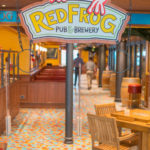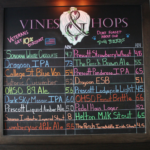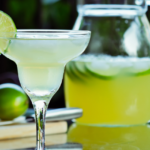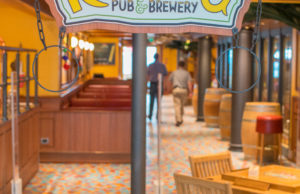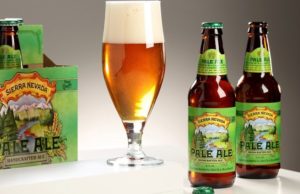Wild and Funky – Brettanomyces and Beer
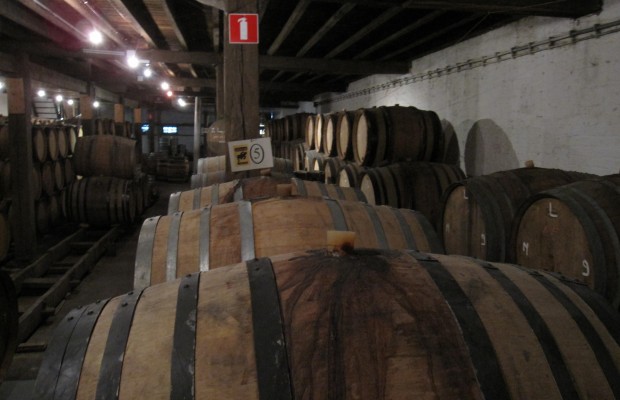
If you haven’t noticed, in the past few years American craft beer has gone wild. Terms like “wild,” “funky,” and “100% Brett” are emblazoned on many a beer label these days, leaving you to scratch your head in wonder. What exactly makes this beer “wild?” What kind of descriptor is “funky?” Just who is this “Brett” guy anyway? The short answer to all three of those questions is Brettanomyces.
What is Brettanomyces?
You’ve probably heard that word mentioned here and there in many a beer forum, beer bar, and brewery tasting room. Brettanomyces is a yeast typically found on fruit skins and plants in the wild, and it’s been impacting craft beer in a big way.
In countries like Belgium, beer is traditionally left to ferment in the wild – barrels (and sometimes vats) of unfermented beer (known as the wort) are left to ferment by taking in the natural flora and fauna of the environment. Brettanomyces is the main culprit, invading this sugary wort to create the incredibly complex Belgian ales we know and love today. Otherwise known as spontaneous fermentation, this is where the “wild” moniker in “wild ale” comes from.
Modern American craft breweries are adapting this Belgian philosophy of employing wild yeasts to create fantastic beer. While there are a select few that stick to spontaneous fermentation, most breweries are employing their molecular biology skills to isolate strains of Brett for use in their beers. This “domestication” of Brett has led to the funky revolution in craft beer.
Characteristics of Brett in Beer
So what exactly does Brett do for beer? Unlike the typical Saccharomyces yeast used in conventional brewing, Brettanomyces targets complex sugars in wort, working more deliberately to produce unique flavor compounds in the finished beer.
In fact, “unique” might be an understatement. One word describes the quintessential Brett beer: funk. Beers brewed with Brett have an intensely earthy, musty note to them – common descriptors include “damp barnyard hay” and “wet horse blankets.” These characteristics may not sound appetizing, but they open up an otherwise one-dimensional beer into something complex and magical. It’s akin to aged, moldy cheese – that cave-aged cheddar may reek like a used diaper, but the result is complex, intense, and undoubtedly delicious.
What About Sour Brett Beers?
You’ll find that a good chunk of the most popular Brett beers on liquor store shelves is also sour as well. Don’t get thrown off by beers that claim they are “100% Brett-fermented,” yet are mouth-puckeringly sour – Brettanomyces does not produce sour beer. This selling point most commonly refers to the fact that Brett is the only yeast involved in the fermentation of the beer. Tartness in lambics and other ales is due to bacteria – the most common are Lactobacillus and Pediococcus. These are introduced along with Brettanomyces to create the complex geuzes and tart saisons prolific on the market today.
By now, you’re no doubt plenty thirsty and curious to try your hand at this funky style. Here are a few widely-available beers that’ll clue you into the standard Brett flavor profile:
● Seizoen Bretta by Logsdon Farmhouse Ales, Hood River, OR: This Brett-ified version of their standard saison gives off all the funky barnyard characteristics you’ll come to expect from a Brett beer – it’s the perfect jumping-off point for those looking to embrace the funk.
● Orval by Brasserie d’Orval, Belgium: This shining example of a delicious Belgian pale ale has a funky dry finish characteristic of many Brett-brewed Belgian beers (say that three times fast!).
● St. Bretta by Crooked Stave Artisan Ales, Denver, CO: A 100% Brett-fermented witbier, this series of beers has four different variants that get released according to the seasons – and every single one deliciously highlights the yeast in a big way.
The flavor profiles of Brettanomyces may not be pretty, but they instill an incredible depth and complexity to beer that may have been lacking otherwise. If the prevalence of American wild ales and Belgian-style ales is any indication, Brettanomyces is here to stay.

